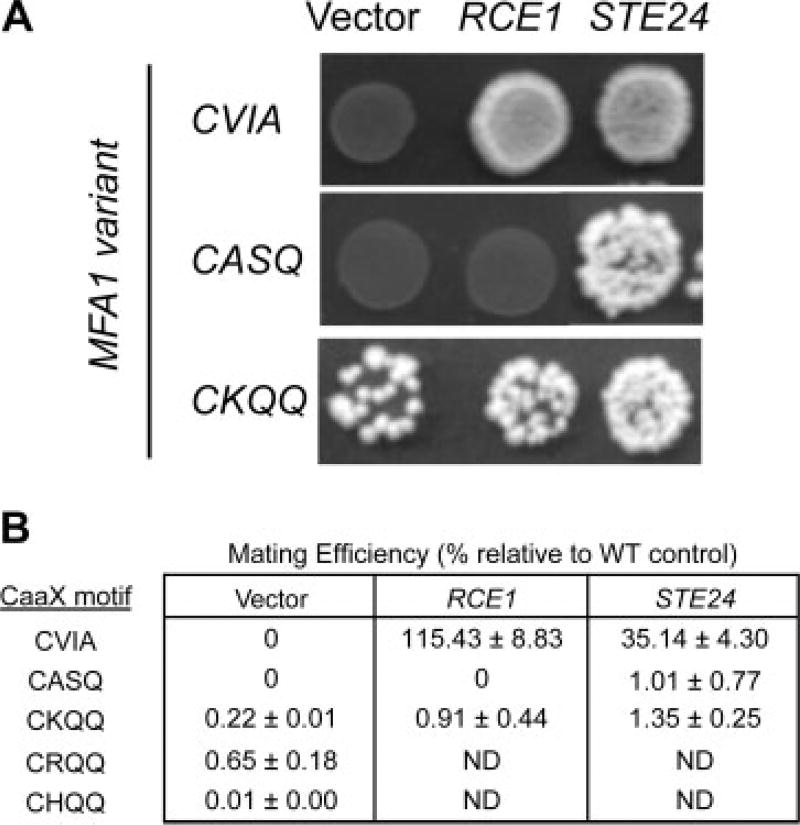Figure 2.
Evidence for Rce1p and Ste24p–independent mating (RSM). (A) The a-factor-CKQQ variant promotes mating in a yeast strain lacking endogenous copies of the CaaX proteases and a-factor genes (yWS164). This phenotype is not associated when a-factor is appended with its natural CaaX motif (CVIA) or one that is Ste24p–specific (CASQ). When co-expressed with Ste24p, but not Rce1p, the CKQQ variant promotes more efficient mating. The plasmids used were pRS316, pSM1107, pSM1314, pWS610, pWS612 and pWS727. (B) Quantitative mating tests were conducted to quantifiably compare the amount of mating promoted by a-factor CaaX motif variants. Mating efficiencies are reported relative to a wild-type control (IH1783) containing both CaaX protease genes, both a-factor genes and empty vectors (pRS315 and pRS316) to maintain the same plasmid markers as the tested strains. The plasmids used were pSM1314 (RCE1), pSM1107 (STE24), pWS610 (CVIA), pWS612 (CASQ), pWS727 (CKQQ), pWS844 (CRQQ) and pWS852 (CHQQ), which were evaluated alone and in combination. In instances where plasmids were evaluated alone, an appropriate empty vector was included to maintain markers. ND, not determined

